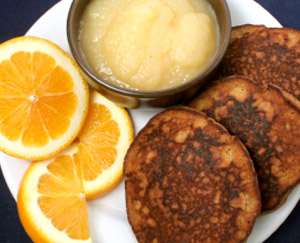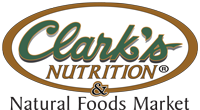Search Healthnotes

Related Topics
-
Delicious Gluten-Free Recipes
-
Gluten-Free Diet Overview
-
Gluten-Free Center
-
Starting Your Gluten-Free Diet
- By Suzanne Dixon
Gluten-Free Product Guide
Too often, gluten-free diet information focuses only on things you cannot have. With this intense focus on what to avoid, the message about what of the many gluten-free foods you can—and should—eat for good health often gets lost. The most nutritious gluten-free diet is one based around healthy, gluten-free, whole foods, such as vegetables, fruit, beans, grains, nuts, seeds, lean meats, poultry, and fish. Over-reliance on heavily processed, convenience foods can result in a diet that lacks important nutrients, including B vitamins, iron, calcium, and fiber, for good health.
Base your meals on healthy, whole foods such as vegetables, fruit, beans, grains, nuts, seeds, lean meats, poultry, and fish
FOOD: Vegetables
- KEY NUTRIENTS: Fiber, vitamin C, minerals, and plant ("phyto") nutrients such as beta-carotene and other carotenes, flavonoids, and antioxidants
- HEALTH BENEFIT: Decreases risk of chronic diseases such as cancer, heart disease, stroke, high blood pressure, and diabetes
- HOW MUCH: A minimum of 3 to 5 1/2-cup servings per day of colorful, raw and cooked vegetables; include a wide variety of different types in many colors
- WATCH OUT FOR: Gluten-containing dips, seasonings, and flavorings; high-fat dips and dressings; excess sodium in canned and prepackaged vegetables
FOOD: Fruit
- KEY NUTRIENTS: Fiber, vitamin C; and phytonutrients such as beta-carotene and other carotenes, flavonoids, and antioxidants
- HEALTH BENEFIT: Decreases risk of chronic diseases such as cancer, heart disease, stroke, high blood pressure, and diabetes
- HOW MUCH: A minimum of 2 to 4 1/2-cup servings per day of colorful fruit; include a wide variety of different types in many colors
- WATCH OUT FOR: Gluten-containing and/or high-fat dips; added sugar or high fructose corn syrup in canned or frozen fruit
FOOD: Whole grains, such as amaranth, brown rice, buckwheat, millet, teff, and quinoa
- KEY NUTRIENTS: Fiber, minerals, B vitamins, and phytonutrients
- HEALTH BENEFIT: Decreases risk of chronic diseases such as cancer, heart disease, stroke, high blood pressure, and diabetes
- HOW MUCH: A minimum of 2 to 6 1/2 1-cup servings per day of non-gluten, whole grains
- WATCH OUT FOR: Wheat, rye, barley, KAMUT wheat, and triticale; oats that have not been certified gluten-free; any breads, pastas, or baked goods that contain these grains
FOOD: Nuts & seeds
- KEY NUTRIENTS: Fiber; monounsaturated and omega-3 fats; protein; selenium, magnesium, and other minerals; and phytonutrients
- HEALTH BENEFIT: Fuels muscle growth and maintenance; regulates appetite and inflammation; supports digestive and cardiovascular health
- HOW MUCH: One 1-ounce serving of nuts or seeds, 3 to 7 times per week; include a variety of types such as walnuts, almonds, pecans, cashews, and Brazil nuts; sesame, pumpkin, and flax seeds; and others
- WATCH OUT FOR: Gluten-containing flavorings and seasonings added to prepackaged nuts; high-sodium nut mixtures
FOOD: Legumes (beans)
- KEY NUTRIENTS: Protein, fiber, iron, zinc, potassium, magnesium, B vitamins
- HEALTH BENEFIT: Fuels muscle growth and maintenance, supports digestive and cardiovascular health, regulates appetite
- HOW MUCH: Minimum of 1/2 cup of beans, 5 to 7 times per week; include various types such as black, navy, red, pinto, and others
- WATCH OUT FOR: Prepackaged bean mixtures with gluten-containing flavorings and/or excess sodium; sodium-added canned beans
FOOD: Fish
- KEY NUTRIENTS: Protein, selenium, B vitamins, vitamin A, omega-3 fats
- HEALTH BENEFIT: Fuels muscle growth and maintenance, supports immunity and cardiovascular function, reduces inflammation
- HOW MUCH: Minimum of 3 ounces of fish, 2 to 3 times per week; include cold water varieties such as salmon, cod, tuna, and sardines
- WATCH OUT FOR: Gluten-containing breadings, toppings, or seasonings; high-mercury varieties such as shark, king mackerel, swordfish, and tile fish*
FOOD: Poultry
- KEY NUTRIENTS: Protein, selenium, B vitamins, vitamin A
- HEALTH BENEFIT: Fuels muscle growth and maintenance, supports good immune function
- HOW MUCH: Maximum of 3 to 6 ounces of lean white meat (for example, chicken breast) with skin removed, per day
- WATCH OUT FOR: Gluten-containing breadings, toppings, or seasonings; fried poultry; fattier dark meat, skin; high-sodium, deli-style poultry and lunch meats
FOOD: Lean beef
- KEY NUTRIENTS: Protein, iron, zinc, selenium, B vitamins
- HEALTH BENEFIT: Builds healthy blood cells and fuels muscle growth and maintenance
- HOW MUCH: A maximum of 3 ounces of lean beef, 3 to 5 times per week
- WATCH OUT FOR: Gluten-containing breadings, toppings, or seasonings; less healthy cuts of high-fat meats
FOOD: Gluten-free packaged and convenience foods**
- KEY NUTRIENTS: Avoid the many gluten-free convenience foods that contain little fiber and few vitamins, minerals, or other important nutrients; some are fortified with folate, other vitamins, or fiber; many are high in sugar, fat, and empty calories
- HEALTH BENEFIT: Only fortified gluten-free convenience foods are likely to offer measurable health benefit; gluten-free packaged and convenience foods often do not offer balanced nutrition and should be used only occasionally or as a special treat
- HOW MUCH: Maximum of 3 times per week
- WATCH OUT FOR: Products that are labeled wheat-free but still may contain gluten; seek out gluten-free labeled foods only
*Consult the Environmental Defense Fund Seafood Selector to identify which fish is best for your health and the environment.
**Examples of gluten-free food brands include Foods by George, Pamela’s Products, Gluten-Free Pantry, Enjoy Life Foods, Glutino, Heartlands Finest, Orgran Natural Foods, Cream Hill Estates, Farm Pure Foods, Gluten Freeda, Bi-Aglut, gf meals, and others.










